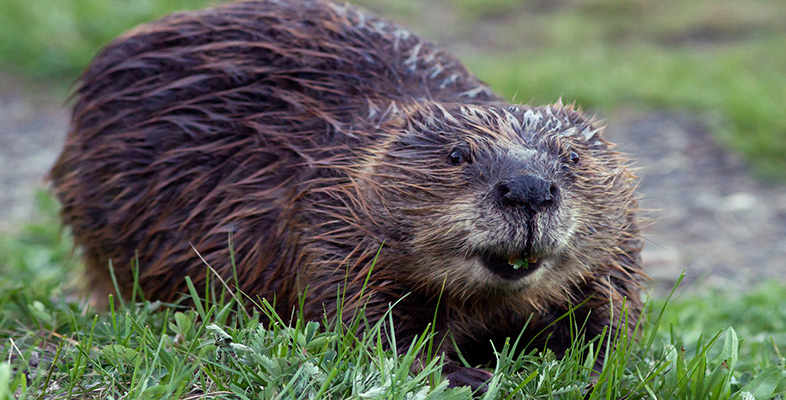3.2 Adaptation
If you are working through the units in this series in sequence, you have already been introduced to the idea that many features of an animal's behaviour and structure are adaptations to their way of life. course S182_2 looked at the oily fur and the flipper-like feet of the water shrew, comparing the water shrew to the common shrew, a close relative that does not have these features and that does not chase prey under water. We also thought very carefully about the way that adaptations are described, taking care to avoid teleological explanations. In everyday speech we use adaptation to describe a deliberate modification; for example, I might describe a recipe as being an adaptation of one given to me by my mother. The Oxford English Dictionary suggests 'modifying' or 'making suitable for a purpose' would be correct usages, but it gives a different definition for biological usage.
Therein lies a problem frequently experienced by the student of biology; biologists take common words and then give them a new technical meaning. Worse is the fact that adaptation is a term that has more than one technical meaning. It can be used to describe the sort of responses that are transiently made to a novel situation. These behaviours can be learnt, such as a particular species exploiting a new food source, in which case I might say 'the marmot [p. 66] becomes adapted to a diet richer in flowers and leaves towards the end of the summer period'. Or the word might be used to describe a physiological response, such as an increase in metabolic rate in response to a change in Ta, in which case I might say 'the marmot adapted to a sudden cold spell by elevating its BMR'. Such events occur on a short timescale, within the lifetime of an individual. However, in what follows I'll be using the term to describe changes over a longer time period - indeed over an evolutionary timescale. Adaptations of this type have a genetic base and can be inherited.
'Adaptation is a central concept in most aspects of modern biology: however, like many powerful ideas, that of adaptation has been misinterpreted and misused.'
(Evolution: a Biological and Palaeontological Approach, ed. P. Skelton)
'Adaptation … a complex and poorly defined concept.'
(Evolutionary Biology, D. J. Futuyma)
Forewarned is forearmed! Clearly adaptation is an important but potentially tricky concept. The difficulty arises because the concept is at first glance absolutely straightforward, yet it is very difficult to demonstrate with scientific rigour. We can say that an adaptation is a biological characteristic of an organism that matches well with its natural environment. But how do we judge a good match when the organism's requirements and activities may change with seasons and with the stage in its life history, and when the environment around it is also constantly changing? One approach is to say that a characteristic is adaptive if the benefits it confers overall outweigh the costs. In practice, it is rather easier to seize upon obvious anatomical features and assign a beneficial function to them (e.g. the rodent incisors chiselling through nuts) than it is to subject our hypothesis to any test. Equally difficult might be the task of uncovering any negative aspects of the possession of such incisors (such as the fact that if an upper incisor is lost, the matching lower one continues to grow unchecked and grows into the skull of the animal).
So we have to be cautious when claiming that a biological characteristic is adaptive. For example, you might come across a reference to herbivores such as the gazelle having eyes that are set on the side of its head for good all round vision, an adaptation for a life lived in herds on the open plains. But if you work through the next course in this series and view 'Plant predators' (at 35:30), you'll see a gazelle spectacularly crash into a tree that it didn't see when trying to escape from a cheetah. A feature can be thought of as adaptive in one situation, whilst being a disadvantage at other times. We have to guard against drawing conclusions based on observation of only a small portion of an animal's life history. So, be prepared to be critical about how the term adaptation is used. For example, thinking of eyes on the side of the head exclusively as an adaptation for living in herds, implies that animals that don't live in herds wouldn't display this anatomical feature. But if things were that simple how might one explain (to give just two examples) the disposition of the eyes on the animals shown on pp. 64 and 80?
I'll leave the discussion there for the time being to talk more about how such adaptations as chiselling teeth could have evolved.
